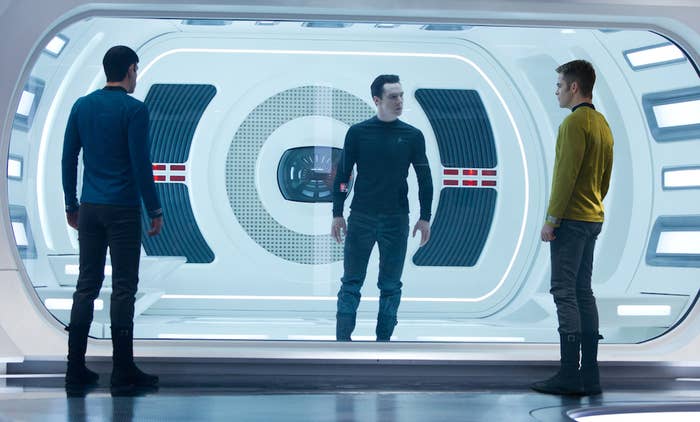
On Tuesday night, Star Trek Into Darkness concluded its worldwide media tour with a red carpet premiere at the Dolby Theater in Los Angeles. As befitting a Star Trek movie, the event utilized the most state-of-the-art equipment currently available for movie exhibition — namely, some 200 speakers and 13 sub-woofers all specifically attuned for the new Dolby Atmos sound system, which transforms traditional "surround sound" into something truly three-dimensional. It's particularly evident at several key moments in the film, when the sound is genuinely awesome and all-encompassing.
First deployed last summer with Disney-Pixar's Brave, the Atmos system is getting its biggest showcase this weekend with Star Trek Into Darkness's release . (Here's a list of the theaters using the system.)
From a sound perspective, Atmos is essentially like moving from standard into high definition. Old-school surround sound has only five to seven separate channels (and one sub-woofer delivering deep base). "You can create some illusion of a 3-D sound [with them]," says Star Trek sound designer and re-recording mixer Will Files, "but it was really always quite compromised." With Atmos, by contrast, "you're able to put [sound] quite literally anywhere you want in the room and move it dynamically in time."
What does that mean for the movie itself?
Look out below! And from the right! And the left! And everywhere!
The opening sequence in Star Trek Into Darkness culminates with a series of shots tracking the U.S.S. Enterprise rising out of an ocean overtop a primitive tribe of aliens. It allowed Files to take full advantage of the many speakers that are now directly above an audience in an Atmos theater.
"When this huge ship rises above the tribe," he says, "you hear it as they would hear it, which is that, there's this giant, hulking machine that's rising out of the ocean and spraying water everywhere, and it's raining down on them, literally, from the ceiling. That's a sensation that we just couldn't duplicate before."
But Files also says that Atmos theaters allow for sounds to come at an audience from all directions. "You have not only many times more speakers and more channels, you actually have much higher quality speakers and channels all around the room," he says — which give the audience a much clearer impression of the size and energy of the machine "as it's coming from around you in the theater." Previously, the effect of the sound was only felt from the speaker behind the screen.
It's not just deep, organ-liquifying bass sounds that Atmos is boosting, either. Higher frequencies are also much clearer and stronger, meaning things like wind through leaves and water coming off the Enterprise come through more distinctly.
"This is the Captain speaking..."
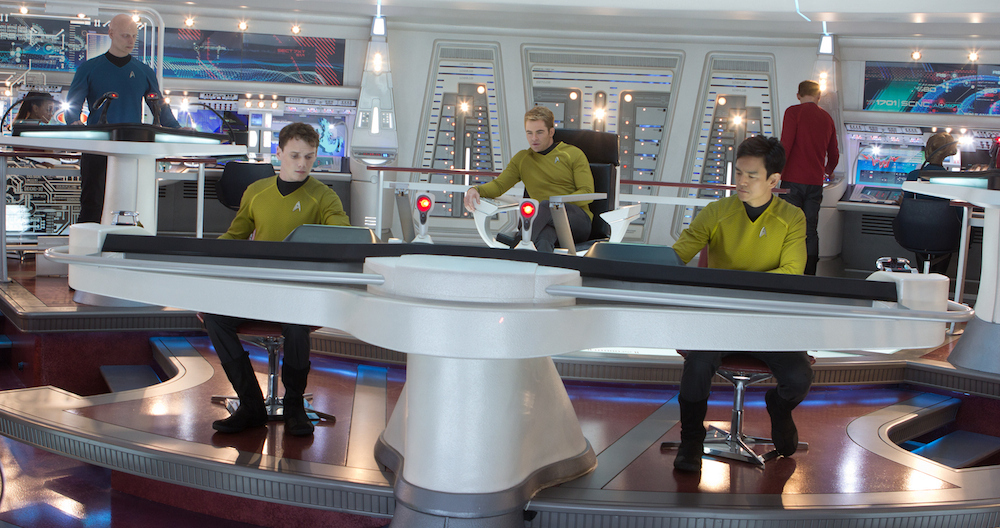
Generally, all dialogue has been delivered from the center speaker that sits directly behind the movie screen. But with speakers sitting atop the audience, Files realized he could deliver certain lines from above.
"We had a lot of announcements in this film [via] overhead PA systems and that sort of thing," he says. "Those speakers would naturally be on the ceiling [of the ship], so of course we put their voices up on the ceiling [of the theater]. It's one of those things that you don't even really think about it because it just sounds natural — that's how we're used to hearing public address systems — but it adds to this sense of you're really there on the ship with the characters."
Wait, who said that?
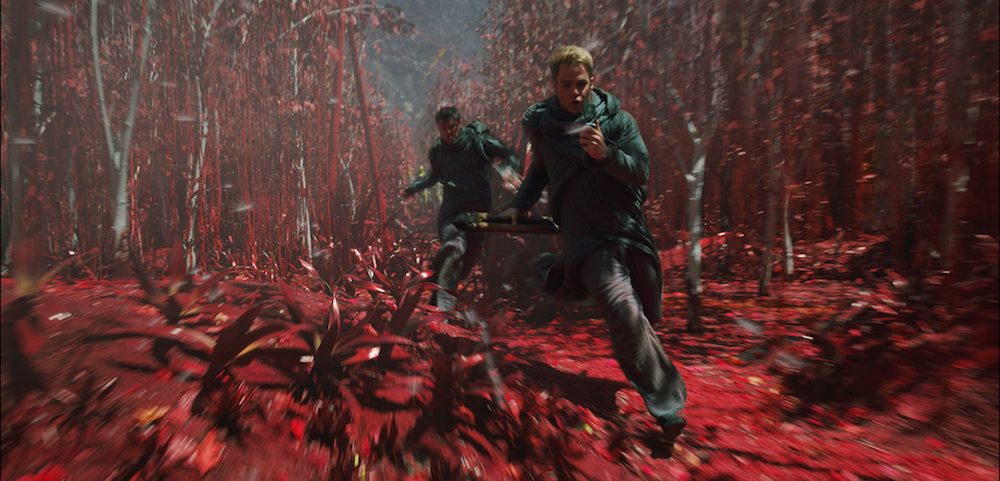
Even when Files did want to put dialogue into the center channel, he didn't have to just place it into a single speaker. "So now when you have two people talking to each other, you can actually offset their voices just a little bit" — allowing the conversation to sound more like it does in real life, coming from two separate sources of sound.
"That's a big thing we've found with this sound system: that it actually really helps the clarity of the mix because you're able to separate music, dialogue, and sound effects a little bit more distinctly," adds Files. "You can spread them around the room more; you don't have anything just blasting out from a center channel."
For that aforementioned opening sequence, for instance, Files assigned the lead alien tribesmen into their own distinct channel as they doggedly pursued Kirk (Chris Pine) and Bones (Karl Urban) through a forest. "We also had fun with taking dialogue off the screen so that when someone flies off into the left corner of the theater, you hear them fly off into the left corner of the theater, through the room."
Is there an echo in here?
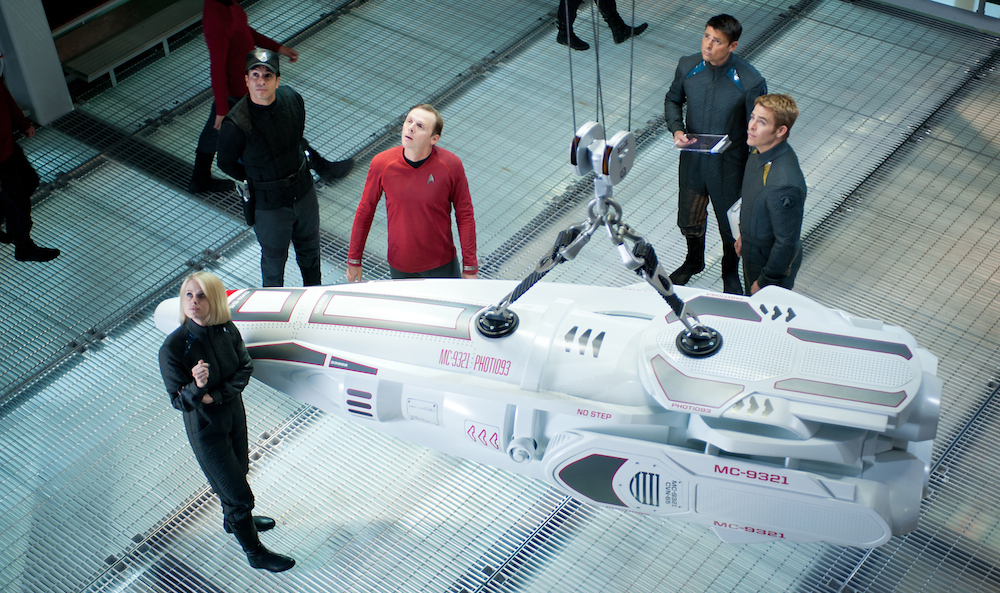
Files is particularly proud of how he took advantage of how sound naturally interacts with different spaces — like when Scotty (Simon Pegg) finds himself inside a cavernous hangar.
"It's this big, open space," he says, "and we're able to add reverb on the ceiling as well as on the sides and on the back, so we're able to do multiple reflections around the room, just like you would hear in a real room."
He laughs. "It's a fun, audio-geek kind of thing to do, but I think that for the audience it does help you feel how small he is and how big this big room is."
This is going to take some getting used to...
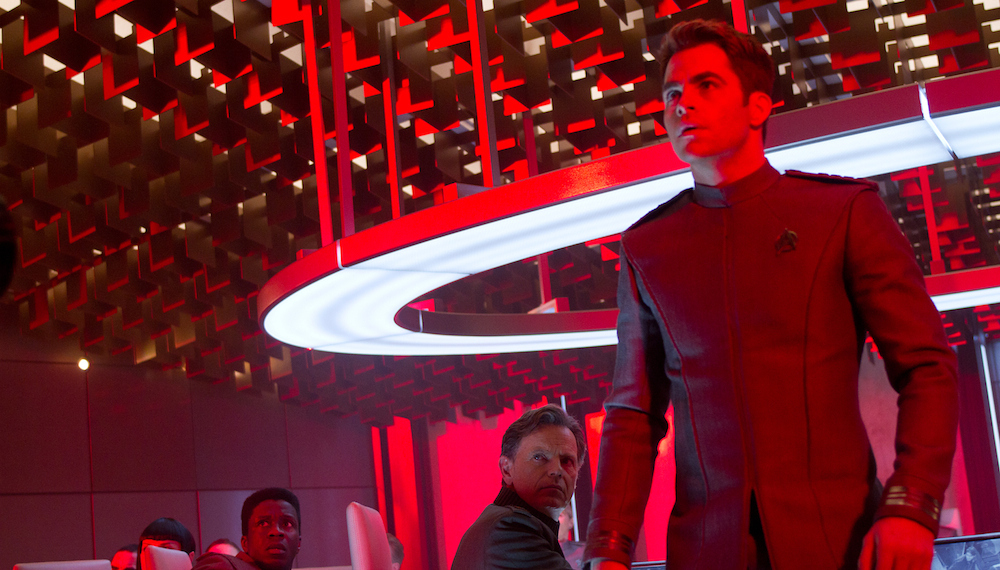
When I tell Files that there were several moments during Star Trek Into Darkness where I thought someone was talking near me in the theater, only to realize it was part of the ambient 3-D sound mix, instead of pride, he's actually a little embarrassed.
"You don't want to take it so far that it feels like it's intruding on the story," he says, "so that's something that I should probably keep a close ear on next time to make sure I'm not going too far with it."
Like with all new movie technology, there will be an adjustment period before audiences are ready to totally embrace it. "It's like 3-D or high frame rate," Files says. "People who are used to seeing movies a certain way, the first time they see a film in Atmos, they might even be thrown off by it a little bit because it's more information and it's more engrossing and encompassing than we're used to."
Files, though, is totally hooked — he already dreads having to go back to mixing the old-fashioned way. "It feels like someone cut your fingers off," he says. "You can't really do the job the same way anymore. I think it'd be the same thing to the audience members: Once you get used to essentially a higher-resolution, higher-quality sound format, going back to anything else is going to feel a little less fun."
